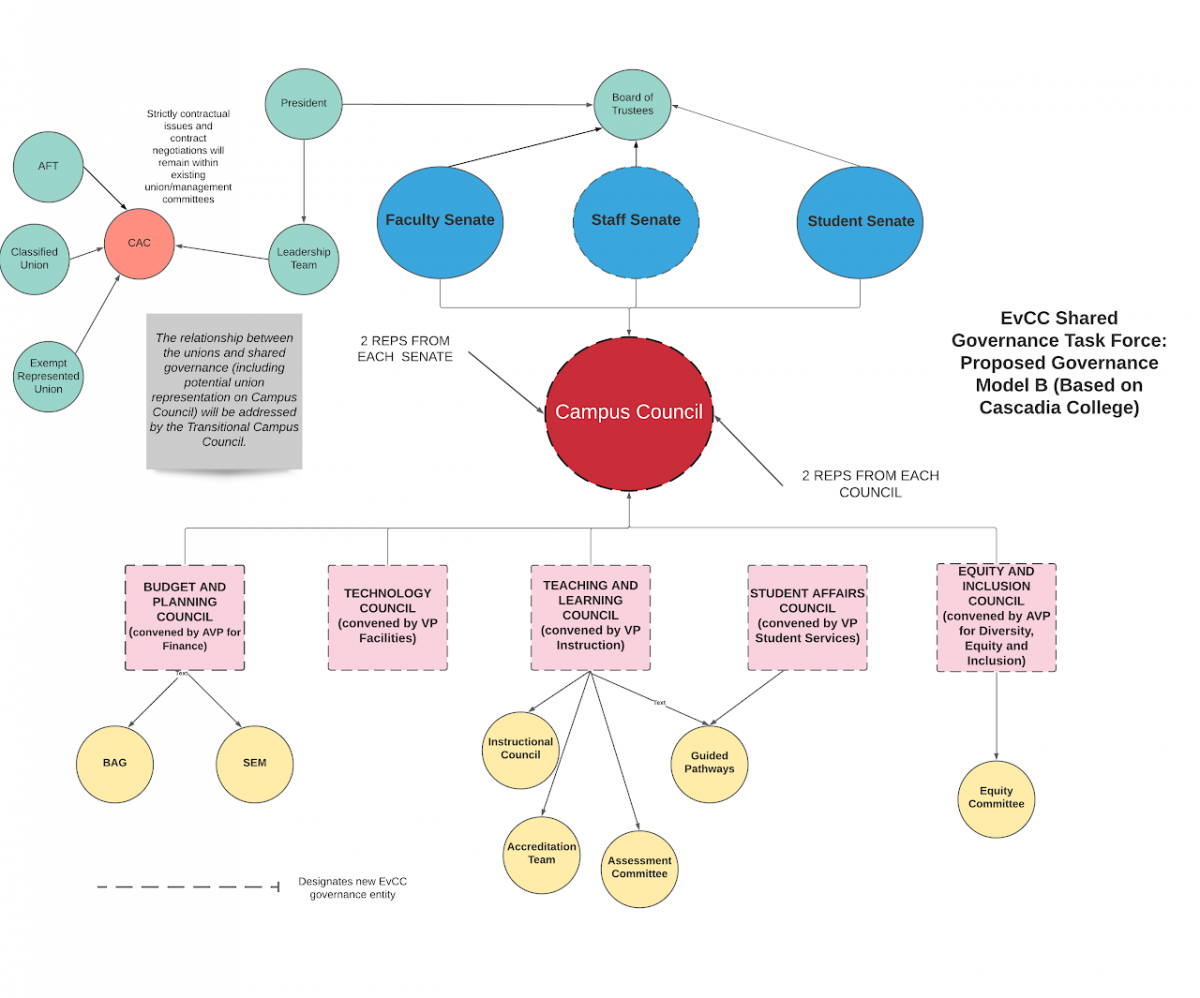Governance Model B
 EvCC Proposed Shared Governance Model B is adapted from Cascadia College.
EvCC Proposed Shared Governance Model B is adapted from Cascadia College.
The model consists of a primary campus governing body, the Campus Council, chaired by the President. The composition of the Campus Council is based on representation by constituency and representation by functional area. Three EvCC Senates (each serving a different campus constituency: faculty, staff and students) will elect or appoint representatives to the Campus Council. In addition, 5 Functional Councils will elect or appoint 2 representatives each to the Campus Council. Thus the Campus Council will comprise 17 members (including the President).
- The five proposed Functional Campus Councils include:
- Budget and Planning Council
- Technology Council
- Teaching and Learning Council
- Student Affairs Council
- Equity Council
Each of these Councils will be convened by the relevant VP or AVP. Current EvCC major campus committees will serve as Standing Committees of the Functional Councils. Standing Committees of the Functional Councils will regularly submit reports to, and seek guidance from, their respective Functional Councils, and through their representatives, to the Campus Council. During the EvCC Shared Governance Transitional Year, proposed Functional Councils may be adjusted or omitted and/or additional Functional Councils may be added to EvCC's Shared Governance structure. Further, additional current committees and/or newly formed committees may also be designated as Standing Committees of the relevant Functional Council.
The main difference between Model B and Model A is the addition of Functional Councils; while this adds more complexity to the shared governance structure, it also ensures that functional experts will be included in Campus Council deliberations. Although constituency representation can overlap with functional representation, there is no guarantee that all core functions of the college will be represented under Model A. For example, Model B ensures at least 2 Equity representatives while Model A does not.

